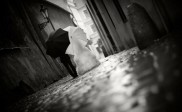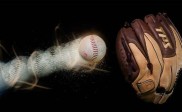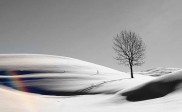iPhoneography : The Art of iPhone Photography
Mobile phones have become ubiquitous across the globe. We take our phones everywhere we go. This means ‘the best camera is the one you carry with you.’ The high quality standard of the in-built iPhone camera, coupled with the availability of apps devoted to enhancing images, have contributed to the emergence of a new genre in photography – “iPhoneography.”
The growth of mobile phone photography is quickly changing the photographic landscape. Iphoneography is exactly what it sounds like, photography using the iPhone. It is the revolutionary new art form that’s inspired by, shot with, and edited on the iPhone.

Photo by Kate wakerley
By combining a mobile phone and a high resolution digital camera, the iPhone allows photographers to capture images without the hassle of carrying additional professional equipment. Being described by Apple as a “growing global movement”, this kind of photography uses iPhones to shoot and edit photos using apps. By carrying an iPhone in our pockets, we carry an outlet for endless creative expression, inspiration, and photography at our fingertips.
There’s no question that photography using iPhones is catching on. Since the iPhone 4 incorporates a higher quality 5 megapixel camera, more and more people are using the device to create photographic art.

Photo by Kate wakerley
Photographers with an interest in iPhoneography can purchase over 2000 photography apps in the iTunes app store. Painting, blurring, vintage, and fisheye lens effects are only some of the photo-editing tools available through iPhone applications.
The artistic level of iPhone photography is growing every day because of the increasing number of people using the iPhone for creative expression. Some photographers are even now known to use the iPhone camera as their primary photographic tool
“I take photos every day on my iPhone,” admits iPhoneographer Michael Sutton. “Usually while I am out walking down at the beach of a morning, and if I can, I will process the image before I come home, while sitting in the car or while having a coffee down at the beach. However, it is not unusual for me to have the iPhone in my hands editing an old image or trying a new app any time of the day” he says.

photo by alexkess
Using the iPhone as a photographic tool means that you can capture photos that otherwise wouldn’t be possible. Iphoneography makes candid photography simple. No poses and no questions asked. With the iPhone, photographers can be up close where people think you’re texting or playing games, when in reality you’re shooting photos. Iphoneography allows you to shoot and share in seconds.
In 2010, the amount of photos uploaded to Flickr taken with an Apple iPhone tripled that of professional camera brands, such as Canon or Nikon.
“I have a nice Nikon DSLR. I have not abandoned it yet, but it has been a few months since I seriously picked it up and made a point of going out and getting a few keepers. I doubt I will give it up for now, but if they ever bring out a DSLR that I can dock my iPhone into, then that could be a different story,” Sutton said.
Its increasing popularity appears to suggest that iPhone photography will become embedded in professional photography.

Photo by Kate wakerley
“There are professional photographers out there already being paid to use the iPhone solely on projects,” Sutton said. “It is now being widely accepted as a new form of photography being internationally recognised. I feel the only area holding it back is the size and sometimes quality of the image. It is by no means as high quality as today’s top of the range DSLRs, but then again people are still paying big money for images taken on a Pinhole camera using film,” he said.
The rise of iPhone photography seems to be leading to a future where photographers are no longer defined by the tools they use, or their shooting techniques. Instead, the focus is on the final result, it all comes down to the image. We no longer point and shoot. We point, shoot, edit, and share.




IPhones are great because you always have them with you and you would get shots you wouldn’t do otherwise, but you can control depth with field, you can’t get fast shutter speeds, you can’t shoot in low light, you can’t do long exposure night photography, etc… You can’t put anything other than a tiny lens with no zoom on it as well. You need at least 450mm equivalent lens for animal photography, for example IPhones are creating their own niche, but can never replace a real camera.